Ford F-150 Vs Ranger: Which Truck is Right for You?

It’s good to be king. Despite the competition that is better than ever, the Ford F-Series truck perennially remains the most popular vehicle in America
While the new 2021 F-150 with its new hybrid powertrain and a myriad of trims is more than adept at catering to all customers looking for a full-sized pickup, Ford has only recently stepped up its game in the re-emerging mid-size pickup truck market. After watching the Toyota Tacoma harvest healthy sales – and profits – out of its Tacoma mid-sizer, suits at the Glass House have got back in the game with the Ranger. It might be a size smaller compared to the F-150 but it is as capable and sometimes more suited to a situation than its full-size elder brother.
Get a Quote on a New Ford F-150 or RangerWhich of these Ford pickup trucks best fits your needs? We will walk you through their differences in an effort to help you figure it out.
Cabin Space
F-150: There’s little doubt that for those whom interior space ranks high on their list of priorities, the larger F-150 will suit their needs much better than the Ranger. Available in a trio of cab configurations (Regular, SuperCab, and SuperCrew) the F-150 has oodles of stretch-em-out space. Families should pay attention to the SuperCrew and its four forward-swinging doors, as its rear-seat legroom rivals that found on the bridge of the Starship Enterprise.
Ranger: Unlike some of its rivals, the Ranger has a livable bench seat its rear quarters, although legroom in the SuperCab model will be at a premium for anyone who is not a relative of Dobby the House Elf. Front-seat space should be more than adequate for most humans, albeit with less elbow room than the F-150, which is much wider.
Bottom Line: If you need space for a growing family, or simply don’t like touching elbows with whoever is sitting alongside in the passenger seat, take a good look at the F-150.
ALSO SEE: 2018 Ford F-150 Review
Cargo Capacity
F-150: The bigger brother in this comparison appears to stand head and shoulders above its stablemate, so you’d think that’d automatically give it the W for cargo capacity, right? Not necessarily. F-150 pickups with a short box measuring just 5.5-feet in length has just 52.8 cubic feet of capacity in its bed, only a hair’s more than the long box Ranger. Opting for the 6.5-foot box adds a solid 10 cubes of storage capacity.
Ranger: This mid-sizer is available in short or standard bed sizes, offering 43.3 and 51.8 cu.ft of cargo space respectively. All Rangers regardless of cab configuration are exactly the same length, with the SuperCrew’s extra interior room showing up at the expense of bed length.
Bottom Line: As we have found out with buffet food and episodes of Scandal, bigger isn’t always better. Take a tape measure along while shopping these trucks to make sure it fits your expectations … and your parking spot.
ALSO SEE: 2019 Ford Ranger Review – VIDEO
Powertrains
F-150: Customers of the F-150 are spoilt for choice, with six different engine options including a hybrid and a brace of transmissions listed on the options sheet – all of them offering prodigious levels of power. The 3.5-liter PowerBoost hybrid is the latest to join the lineup and constitutes mating of the 3.5-liter EcoBoost with a 35-kW electric motor that is integrated into the 10-speed transmission. Couple that with a 1.5-kWh battery pack and you are looking at a 700-mile range and a 12,000 lbs, towing capacity. Not to mention 430 hp and 570 lb-ft of peak torque.
The rest of the engine lineup is carried over relatively unchanged. A 3.3-liter V6 remains the base engine making 290 hp and 265 lb-ft of torque. The 2.7-liter EcoBoost V6 manages 325 hp and 425 lb-ft while the 5.0-liter V8 makes 400 hp and 10 more torque. But the diesel, while not the torquiest, makes 440 lb-ft at just 1,750 rpm. Finally, the 3.5-liter EcoBoost (no hybrid) makes 400 hp and 500 lb-ft of torque.
Regardless of the powertrain you choose, the 10-speed automatic is the only transmission available with the Ford F-150.
Ranger: In a polar opposite situation compared to the F-150, Ranger has but a single engine. It comes in the form of a 2.3L EcoBoost inline-four, said to make 270 horsepower and 310 units of twist. It is mated to a 10-speed automatic. Like the full-sizer, 4×4 is an option.
Bottom Line: If it’s pure power you’re after or pure hauling capability, look no further than the F-150, particularly one equipped with the new 3.5L PoweBoost hybrid. If hybrid isn’t your thing then the 3.5-liter EcoBoost V6 works just as well, while everyone else will be well served by the snappy 2.7L turbo V6.
Capability
F-150: Speaking of hauling, the new 2021 F-150 can now tow an incredible 14,000 lbs when equipped with the max trailer two package. Most configurations can handle at least an 8,000-lb trailer without an asterix. F-150 trucks are also approved to haul a fifth-wheel camper, though ratings for that type of unit are lower than a conventional tag-along. Payload, the dark art that includes human passengers as cargo weight, tops out over 3000 lbs but only in a very specific model and trim.
Ranger: Recently rated at a maximum of 7500 lbs depending on equipment, the Ranger punches above its weight class. That number is far above what the four-cylinder Toyota Tacoma is able to haul and even outstrips that truck’s abilities with a V6 engine.
Bottom Line: Brute force wins this match, with the F-150 maximum tow rating nearly double that of the Ranger. However, most folks will rarely haul anything heavier than 7500lbs, given the average weight of a camping trailer these days checks in at about 6000lbs. It’s important to buy a rig capable of handling your plans for summer fun but it’s not necessary to sign up for more truck than you need.
ALSO SEE: 2021 Ford F-150 PowerBoost Hybrid Review: This Isn’t Your Father’s Hybrid
Fuel Economy
F-150: The popular 2.7L EcoBoost V6 engine is rated at 22 mpg on the combined cycle in 4×2 pickups. Owners of V8-powered trucks can expect economy in the high teens, while the 400-hp 3.5L motor should return fuel mileage in the 20 mpg ballpark. But the star of the fuel economy ratings, in the F-150 lineup at least, is the new hybrid engine which promises 24 miles per gallon of fuel regardless of the driving environment. The only engine more efficient is the 3.0-liter diesel which can return up to 25 mpg in the city and 26 mpg out on the highway.
Ranger: EPA-estimated fuel economy rating for two-wheel drive versions of the Ranger are an impressive 21 mpg in the city, 26 on the highway and 23 combined for its two-wheel drive truck. Four-wheel drive Rangers rated 20 mpg city, 24 highway and 22 mpg combined.
Bottom Line: Lightness and a four-cylinder engine conspire to provide Ranger owners with the better overall deal on fuel economy, particularly in highway driving. However, the days of full-sized trucks swilling fuel at a rate many orders of magnitude higher than their smaller brothers are long gone.
Technology
F-150: Remember when “this thing rides like a truck” was an insult? Not anymore. Ford has imbued even the most basic F-150 with a smooth ride thanks to suspension technology that is light years ahead of yesteryear’s ox carts. In terms of infotainment, it now comes with a huge new 12-inch SYNC4 touchscreen infotainment screen, admittedly available on the snazzier trims. It will also get OTA updates to its apps and software. And the F-150 now even comes with a fold-away gear lever (park only) to free up more space on the center console.
Plus, in terms of comfort, F-150’s higher trims can hang with the best luxury sedans, offering the likes of advanced navigation tools and massaging climate-controlled seats.
The F-150 now also features new Max Recline Seats available on King Ranch, Platinum and Limited trims and lie almost flat like a bed for a little extra relaxation.
Ranger: Ford’s small truck is no slouch, coming standard with Pre-Collision Assist tools such as Automatic Emergency Braking. Lane-keeping technology, standard on the top two trims, pulls the Ranger back onto the straight and narrow while Lariat’s adaptive cruise control keeps drivers at a safe distance from the machine in front of them.
Bottom Line: Ranger has more active safety tech than the F-150. Conversely, the F-150 has more available creature comforts than the Ranger. With Ford’s competition making steady gains in both areas, don’t expect either deficiency to stick around for too long.
ALSO SEE: Toyota Tacoma vs Tundra: Which Truck is Right for You?
4×4 Cred
F-150: This debate can be settled with a single word: Raptor. Serving as a ‘halo model’ for the entire F-150 lineup, this rough-n-ready pickup can tear through sand dunes at speed without breaking a sweat. Workaday models have an electronic-shift-on-the-fly transfer cases while snazzy trims (Lariat and above) deploy a two-speed unit with automatic 4WD capability.
Ranger: Ford is choosing not to offer a Raptor-ized version of the Ranger in this country, for unfathomable reasons known only to Jim Hackett and the ghost of Henry Ford. FX4 trims will have a measure of trail management, complete with downhill descent control and different drivetrain settings depending on the driving surface. Ain’t no Raptor, though, Jimmy.
Style
F-150: The most subjective of measures, styling is often judged in the eye of the beholder. Nevertheless, the F-150 is an attractive machine from just about any angle, with a lantern-jawed grille and expressive headlights in each of its many trims. Those who think there’s no plate like chrome can ladle on the shiny stuff, while fans of color-keyed addenda (*raises hand*) may opt for sporty appearance packages.
Ranger: Even though this Ranger is new to America, it’s a truck that has been available elsewhere in the world for a few years now. With this knowledge, the Ranger’s lack of visual gravitas begins to make a bit of sense. Don’t expect to intimidate any of your buddies with a Colorado ZR2 in this thing.
Bottom Line: Fans of t-square styling and a traditional trucklike face will find more to like in the F-150 than the Ranger.
Pricing
F-150: Sticker prices on the F-150 have a range broader than Mariah Carey’s vocal cords. Starting at $30,635 (including destination) for a base model Regular Cab in XL trim, the F-150 plows through its volume XLT ($36,745) and Lariat ($47,035) trims, makes a stop in King Ranch ($58,670) and Platinum ($61,450) territory, before topping out with Raptor and Limited ($73,165) models. A fully loaded, check-all-the-boxes example can eke scarily close to $80,000.
Ranger: With a similar nomenclature as the F-150, the Ranger XL SuperCab starts from $26,660 (including destination). The XLT starts from $30,710 while the SuperCrew costs $2,175 dearer. At the top of the Ranger lineup sits the Lariat starting from $34,750. As with the XLT, the Supercrew costs $2,175 over the SuperCab.
Bottom Line: Despite the disparity in top-trim pricing, the F-150 can be had for a reasonable sum if one exercises restraint with the options sheet. A mid-range XLT SuperCrew with the powerful 3.5L EcoBoost and Max Trailering Package, able to handle just about any task most weekend warriors can throw at it, stickers at around $45,000.
The Verdict: Ford F-150 vs Ranger
F-150: It’s the king for a reason. At one end of its wide range, it is able to merge luxury car features with the ability to tow a house, making it very appealing to wealthy buyers who want to haul their horses to a polo match. At the other end, base-spec trucks provide workhorse capabilities for a reasonable price. Somewhere in the middle, shoppers will find a pickup to suit their needs.
Ranger: Not everyone needs a pickup that spans 250.5 inches in overall length, a measure to which the longest versions of the F-150 is capable. For those customers, especially ones who do not plan on being constantly accompanied by the entire family unit, the Ranger may very well be the best option.
Bottom Line: Make sure to weigh your needs against the capabilities of these two trucks. Know the weight of the trailer you plan to tow, measure the bikes you plan to put in the box, and count the number of passengers you plan to carry. Do all that, and you’ll be well on your way to making a great choice.

Living in rural Canada, Matthew has immersed himself in car culture for over 30 years and relishes the thought of a good road trip. A certified gearhead, he enjoys sharing his excitement about cars and is very pleased to contribute at AutoGuide. Matthew is a member of Automotive Journalists Association of Canada (AJAC).
More by Matthew Guy



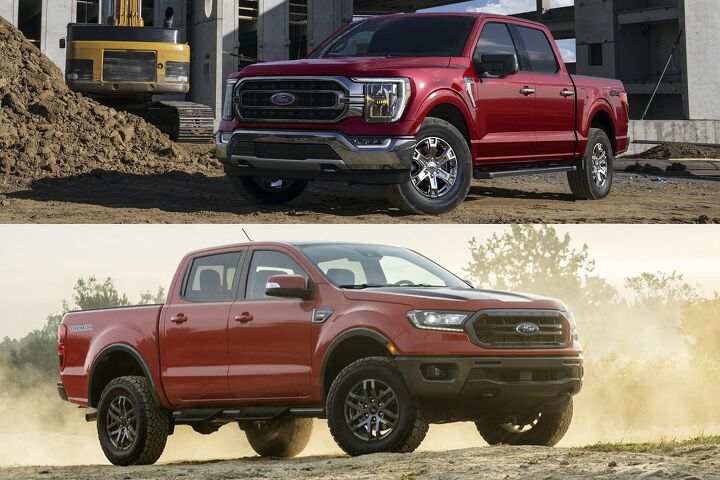

























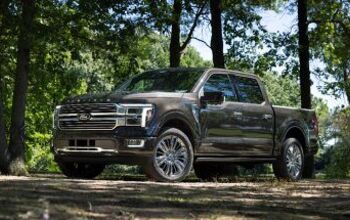

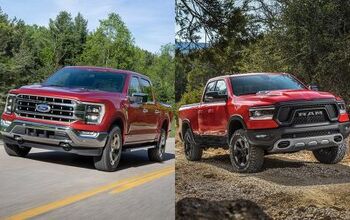
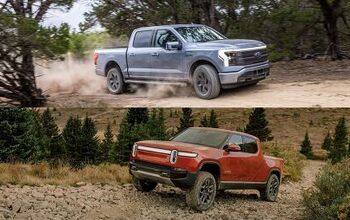
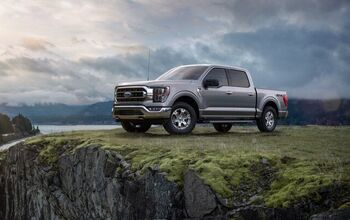









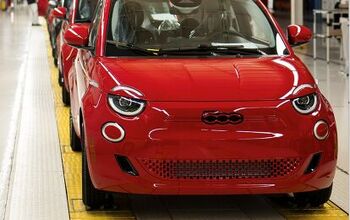
Comments
Join the conversation